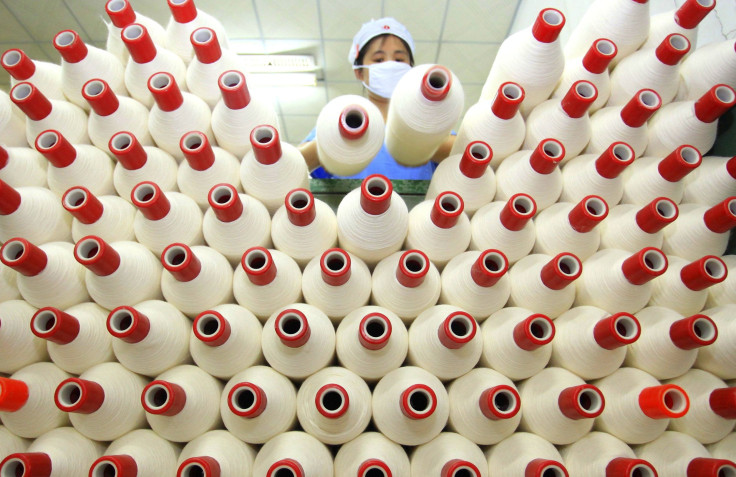China Factory Activity Hits Multi-Month Highs, Economy Steadying

(Reuters) - China's factory activity hit multi-month highs in June, official and private surveys showed, reinforcing signs that the world's second-largest economy is steadying as the government steps up policy support.
Analysts believe the worst for the economy is over as recent "mini-stimulus" measures kick in, but said Beijing may have to announce more stimulus measures in coming months to offset the increasing drag from the cooling property sector.
The official Purchasing Managers' Index (PMI), published by the National Bureau of Statistics, hit a six-month high of 51 in June, in line with market expectations and up from May's 50.8.
The final HSBC/Markit purchasing managers' index (PMI) for June rose to 50.7 from May's 49.4, surging past the 50-point level that separates growth in activity from contraction for the first time since December.
"The economy has turned the corner, but it will take time for the recovery to become more broad-based. Infrastructure investment needs to pick up more strongly in the coming months to lift demand," said Julia R Wang, an economist at HSBC in Hong Kong.
“Meanwhile, the slowdown in the property market continues to pose downside risks to growth in the second half of the year. We expect both fiscal and monetary policies to remain accommodative until the recovery is sustained."
The government has unveiled a series of modest stimulus measures in recent months to give a lift to economic growth, which dipped to an 18-month low in the first quarter. Such measures have included targeted reserve requirement cuts for some banks to encourage more lending, quicker fiscal disbursements and hastening construction of railways and public housing projects.
On Monday, China's banking regulator announced changes in the way it calculate banks’ loan-to-deposit ratio (LDR) to help channel more credit into the real economy.
MORE GOVERNMENT SUPPORT MAY BE NEEDED
The economy has started showing signs of stabilization since May as such supportive steps kicked in. Growth in factory output, retail sales and fixed asset investment all either met or beat market expectations last month, with retail sales notching its best showing in five months.
As one of the earliest pieces of Chinese data released each month, the improved PMI will bolster market expectations that the economy is regaining some traction, after growth hit an 18-month low of 7.4 percent between January and March. The official survey showed a broad-based recovery in manufacturing activity in June, with nine out of the 12 sub-indices pointing to improvement from the previous month.
Still, both surveys showed manufacturing-sector jobs were still being shed in June - another indication that more policy steps are needed to keep economic growth on track.
Both surveys also showed a marked slowdown in growth in export orders, though domestic demand appeared to pick up.
The official PMI is weighted more towards bigger and state-owned enterprises and tends to paint a rosier picture than the HSBC/Markit survey, which focuses more on smaller private firms.
Although authorities said earlier this year that it was alright if annual economic growth for 2014 slightly missed the government's target of 7.5 percent, Premier Li Keqiang said earlier this month that 7.5 percent was a minimum requirement that would be met.
Yet, leaders are reluctant to unveil massive aid like the 4 trillion yuan ($640 billion) stimulus implemented during the global crisis in 2008-09, which took local governments deep into debt. Instead, they have unveiled a series of more modest steps in recent months in hopes of reviving activity.
"Targeted policy easing will continue in the second half. The government may have to step up policy measures if it really wants to achieve the 7.5 percent target," said Nie Wen, an economist at Hwabao Trust in Shanghai.
He said the chance of cutting reserve requirements for all banks still exists if growth in the third quarter disappoints.
A recent Reuters poll showed analysts expect annual GDP growth to slow to 7.3 percent in the second quarter. They expect full-year growth of 7.3 percent in 2014, the weakest in 24 years.
Analysts at ANZ believe that annual economic growth could now rebound slightly to 7.5 percent in the second quarter.
Nomura recently raised its second-quarter growth forecast to 7.4 percent from 7.1 percent, citing the boost from increased policy easing. The statistical bureau is due to release data on GDP growth for the second quarter on July 16, along with factory output, retail sales and investment figures.
© Copyright IBTimes 2024. All rights reserved.











